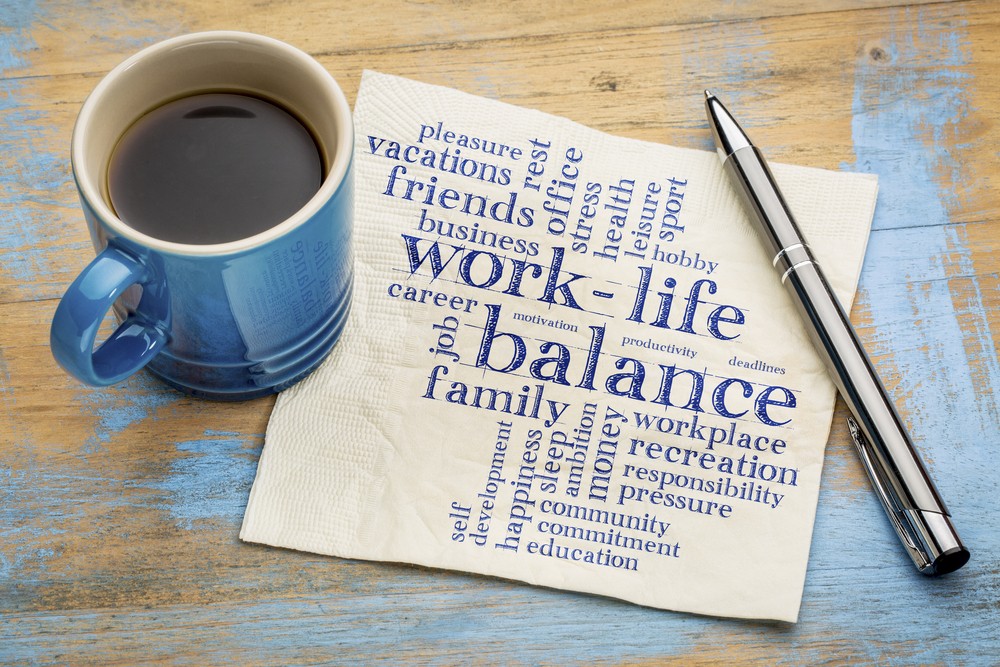In today’s fast-paced and demanding world, achieving a healthy work-life balance has become increasingly important. Balancing the demands of work and personal life can improve overall well-being, reduce stress, and enhance productivity. In this article, we will explore practical strategies and tips to help you create a healthy work-life balance and lead a more fulfilling life.
1. Understanding Work-Life Balance
Work-life balance refers to the equilibrium between work-related commitments and personal life responsibilities. It involves effectively managing time, energy, and attention between work, family, relationships, and personal well-being. A healthy work-life balance allows individuals to prioritize their physical and mental health, relationships, and personal interests while meeting professional obligations.
2. Identify Your Priorities
The first step in creating a healthy work-life balance is to identify your priorities. Take some time to reflect on what truly matters to you. Determine your core values, personal goals, and the aspects of your life that bring you joy and fulfillment. By clarifying your priorities, you can make conscious choices and allocate your time and energy accordingly.
3. Set Boundaries
Setting boundaries is crucial to maintain a healthy work-life balance. Clearly define your work hours and communicate them to your colleagues and clients. Avoid constantly checking emails or taking work-related calls during your personal time. Establishing boundaries helps you create dedicated time for yourself, your family, and your hobbies, reducing the risk of burnout and enhancing overall well-being.
4. Practice Effective Time Management
Effective time management is key to achieving a healthy work-life balance. Prioritize your tasks based on importance and urgency. Use tools such as calendars, to-do lists, or productivity apps to organize your schedule and stay on top of your responsibilities. Avoid multitasking and focus on one task at a time, which can improve productivity and reduce stress.
5. Take Care of Your Physical and Mental Health
Maintaining good physical and mental health is essential for a healthy work-life balance. Engage in regular exercise, eat a balanced diet, and prioritize sleep to keep your energy levels high and manage stress. Incorporate activities that promote relaxation and self-care, such as meditation, yoga, or hobbies that bring you joy. Taking care of your well-being enables you to be more present and productive in both your personal and professional life.
6. Unplug and Disconnect
In today’s digitally connected world, it’s important to unplug and disconnect from work regularly. Allocate specific periods of time when you refrain from checking work-related emails or engaging in work-related activities. Use this time to engage with loved ones, pursue hobbies, or simply unwind and recharge. By disconnecting from work, you allow yourself to fully enjoy your personal life and maintain a healthy work-life balance.
7. Delegate and Outsource
Learn to delegate tasks and responsibilities when possible. Understand that you don’t have to do everything yourself. Identify tasks that can be entrusted to others, whether at work or home and let go of the need for complete control. Delegate tasks that are not your core strengths or that can be done more efficiently by others. Outsourcing certain responsibilities can also help free up time and alleviate stress.
8. Practice Mindfulness and Self-Care
Mindfulness is the practice of being fully present and engaged in the current moment. Cultivating mindfulness can help you find balance and reduce stress. Take moments throughout your day to pause, breathe, and be aware of your thoughts and emotions. Incorporate self-care activities that rejuvenate and nourish your mind, body, and soul. This could include activities like reading, spending time in nature, or engaging in creative outlets.
9. Maintain Open Communication
Open communication is crucial for maintaining a healthy work-life balance. Clearly communicate your needs, expectations, and limitations to your colleagues, supervisors, and loved ones. If you’re feeling overwhelmed, discuss it with your support network and explore solutions together. Effective communication fosters understanding and support, creating a work and personal environment that values and respects your boundaries.
10. Conclusion
Creating a healthy work-life balance is a continuous process that requires conscious effort and self-reflection. By identifying priorities, setting boundaries, practicing effective time management, and taking care of your physical and mental health, you can achieve a better balance between work and personal life. Remember, a healthy work-life balance is unique to each individual, so find what works best for you and make it a priority in your life.
FAQs
- Q1. Is achieving a perfect work-life balance possible?
Achieving a perfect work-life balance may be challenging as it implies an equal split between work and personal life. Instead of striving for perfection, focus on finding a balance that aligns with your priorities and brings you fulfillment. Work-life balance is a subjective concept, and it may vary throughout different stages of life or depending on individual circumstances.
- Q2. How can I manage work-related stress and maintain a healthy work-life balance?
To manage work-related stress and maintain a healthy work-life balance, it’s important to set boundaries, practice effective time management, and prioritize self-care. Engaging in stress-reducing activities such as exercise, mindfulness, and relaxation techniques can also be helpful. If stress becomes overwhelming, consider seeking support from a counselor or professional to explore coping strategies.
- Q3. What should I do if my work demands interfere with my personal life?
If your work demands start interfering with your personal life, reassess your priorities and consider communicating your concerns with your supervisor or manager. Explore possibilities for delegating tasks, adjusting workloads, or discussing alternative work arrangements, such as flexible schedules or remote work options. Open and honest communication can often lead to finding a solution that supports both your work responsibilities and personal life.
- Q4. How can I ensure I have enough time for family and relationships?
To ensure you have enough time for family and relationships, prioritize quality over quantity. Set aside dedicated time for your loved ones and engage in meaningful activities together. Practice active listening and be fully present during these interactions. By creating special moments and maintaining open communication, you can nurture your relationships while maintaining a healthy work-life balance.
- Q5. How can I avoid bringing work stress home?
To avoid bringing work stress home, establish a routine to help you mentally transition from work to personal life. This could include engaging in a relaxing activity, such as taking a walk or listening to music, before leaving your workplace. Practice mindfulness and be aware of your thoughts and emotions. Additionally, create a physical separation between your workspace and personal living space if possible, to create a boundary between work and home life.




